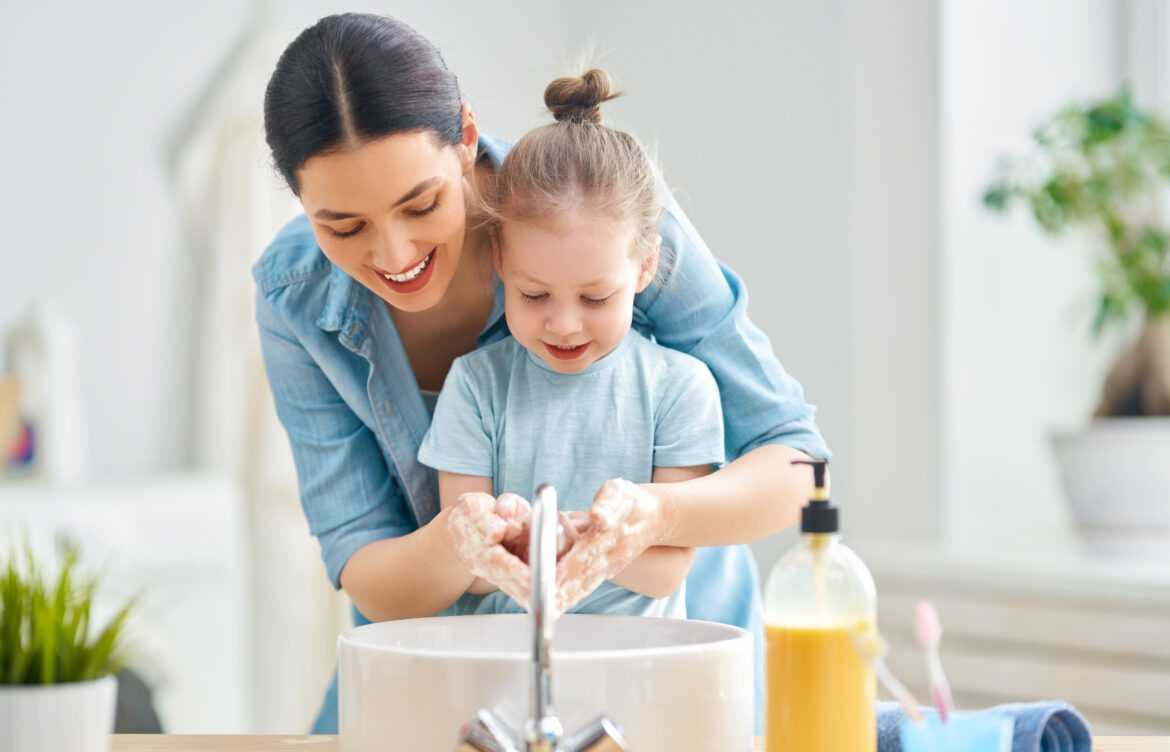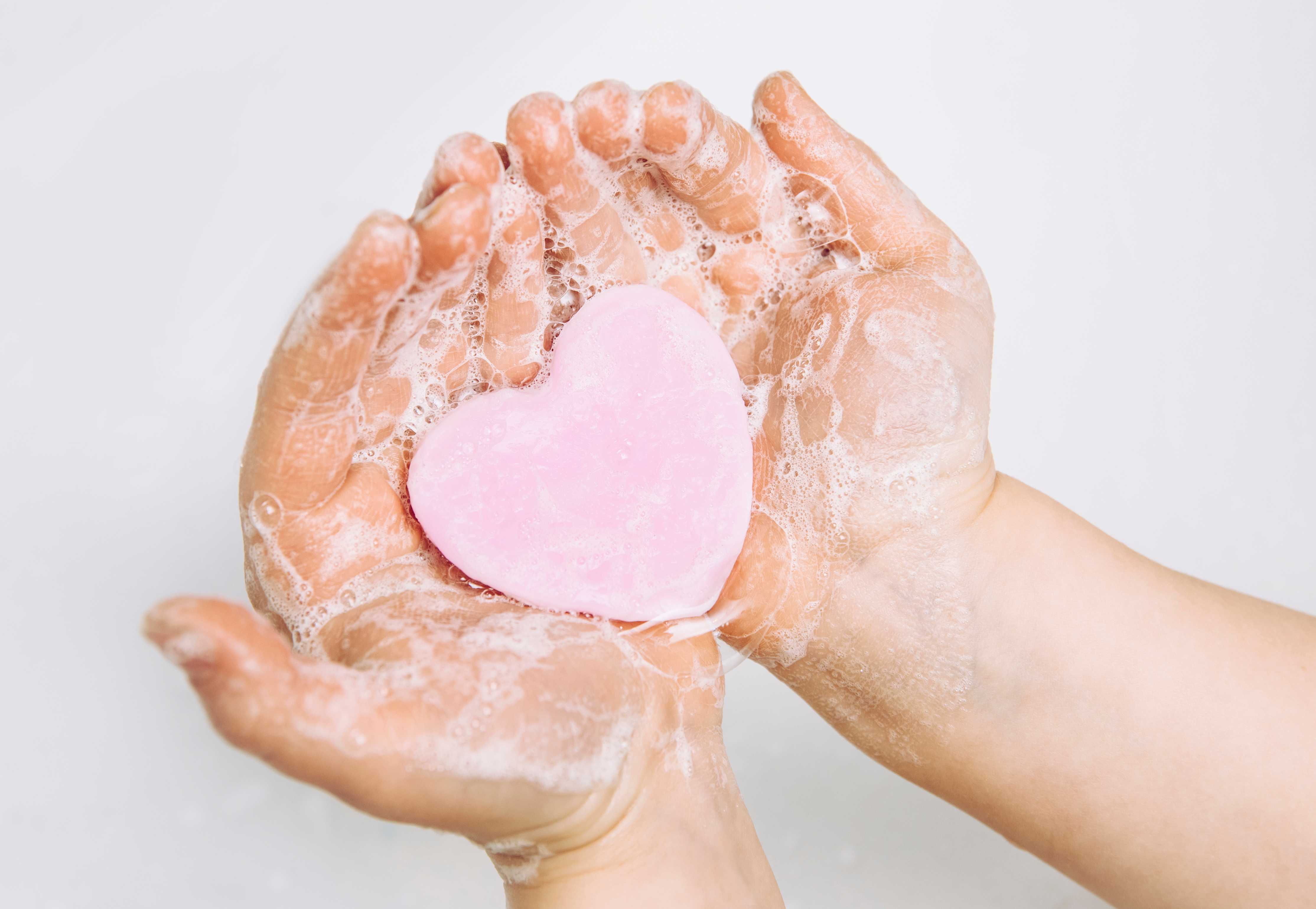
Hand Soap & Beyond: Teaching Kids to Love Handwashing
1. Turn Handwashing Into a Game
You can turn handwashing into playtime with fun ideas! For instance, you can do the ‘glitter germs’ challenge by sprinkling a little glitter on their dirty hands and challenging them to wash it all off. This activity vividly shows how soap removes germs.
Meanwhile, if you have a visual learner, you can create a germ hunt with pictures or posters that turn hygiene into an exciting discovery game.
2. Create a Kid-Friendly Handwashing Station
A child-friendly hand washing station encourages independence and makes the process smoother.
-
- Use a step stool or bathroom stool so little ones can reach the sink.
- Keep a clean towel or fun hand towels nearby for drying.
- Decorate the bathroom with streamers, an evidence-based handwashing poster, or even birthday bags for a festive touch.
- For extra convenience, consider a contactless handwashing station or electric hand driers to minimize mess.
Aside from the above, this is also the perfect time to explore quality hygiene products your child can safely use often. For instance, why not discover Skipper’s Hand Soap Collection—a child-safe, antibacterial hand soap with fun scents and colors to make hand activities more enjoyable?
3. Make It Part of Their Daily Routine
Make handwashing a delightful part of their world, a moment they look forward to. Build strong handwashing habits, weave them into daily routines—before meals, after playtime, bathroom use, and coming home. Use simple reminders like “Hands washed?” or gesture to the bathroom.
4. Reward Good Handwashing Habits
Positive reinforcement makes handwashing fun and effective! Offer small rewards like stickers for proper technique, create a colorful handwashing chart to track progress, or invent a silly handwashing dance together. Most importantly, praise their efforts enthusiastically—this builds confidence and turns proper hygiene into a habit they’ll proudly maintain.
5. Teach Them About Germs in a Fun Way
Make handwashing meaningful through interactive lessons! Try the ‘frozen hand activity’ to visually demonstrate germ spread, teaching kids how keeping their hands safe protects classmates, too. Turn learning into fun with mini germ assemblies where they discover how we all carry germs—making handwashing feel like an important superpower.
With these creative strategies, hygiene transcends a simple chore, becoming a source of joy and empowerment for your little ones. You’re not merely instilling clean hands; you’re cultivating a lifelong love for handwashing, transforming a routine into a cherished, health-affirming ritual.

Overcoming Handwashing Hurdles
Teaching kids proper hand hygiene often comes with its fair share of resistance, messes, and creative excuses. Here’s how to transform these struggles into learning opportunities:
1. When Little Hands Resist Washing
Every parent knows the battle cry, ‘I don’t wanna!’ When faced with whining and other forms of handwashing resistance, turn obligation into adventure. Challenge your child to a bubble-making race at the sink, or tap into their imagination by asking, ‘Which soap should we use today—the magical strawberry potion or the superhero blueberry foam?’ The key is to frame handwashing as an exciting privilege rather than a chore.
2. Containing the Splash Zone
If your bathroom routinely looks like a water park after handwashing time, strategic solutions can help. Install a faucet extender or sturdy step stool to give your child proper reach without the climbing antics. For quick cleanups, keep no-rinse soap options handy.
3. The Rush Job Dilemma
Kids are masters at the ‘one-second scrub,’ but proper handwashing takes time. Make duration tangible by singing the ‘Happy Birthday’ song twice (about 20 seconds) or using a fun visual timer. Turn thoroughness into a game by challenging them to create at least 10 giant bubbles before rinsing.
When you notice them doing it right, offer specific praise, such as, ‘I saw how carefully you washed between your fingers; that’s how experts do it!’
4. Public Restroom Anxiety
Handwashing away from home can be intimidating for young children. Prepare them with a kiddie kit, including pocket-sized sanitizer for when sinks aren’t available. Teach the ‘paper towel trick’ (using a towel to turn off faucets and open doors) to ease germ concerns.
Build confidence at home first by pretending your bathroom is a ‘spaceship decontamination station’ or ‘princess hand-washing fountain.’ This playful practice makes unfamiliar restrooms less daunting.
Remember, every soap spill, skipped step, or creative excuse is a precious teachable moment you wouldn’t want to miss!
Conclusion
By making handwashing fun through games, kid-friendly stations, and positive reinforcement, you transform this essential habit into an engaging daily practice. When children understand germs through playful activities and see handwashing as their ‘”superpower,'” they’re more likely to embrace it enthusiastically. With patience and creativity, you’ll instill lifelong hygiene habits that keep them—and those around them—healthier and happier.
 Mattie Hubbard is a distinguished figure in the field of sustainable agriculture, known for her innovative approaches to environmentally friendly farming practices. With a deep-rooted passion for the earth and a commitment to ecological balance, Mattie has become a leading voice in promoting sustainable methods that benefit both the environment and the farming community. Her work often involves integrating traditional agricultural knowledge with modern techniques to create systems that are both productive and sustainable.
Mattie Hubbard is a distinguished figure in the field of sustainable agriculture, known for her innovative approaches to environmentally friendly farming practices. With a deep-rooted passion for the earth and a commitment to ecological balance, Mattie has become a leading voice in promoting sustainable methods that benefit both the environment and the farming community. Her work often involves integrating traditional agricultural knowledge with modern techniques to create systems that are both productive and sustainable.
